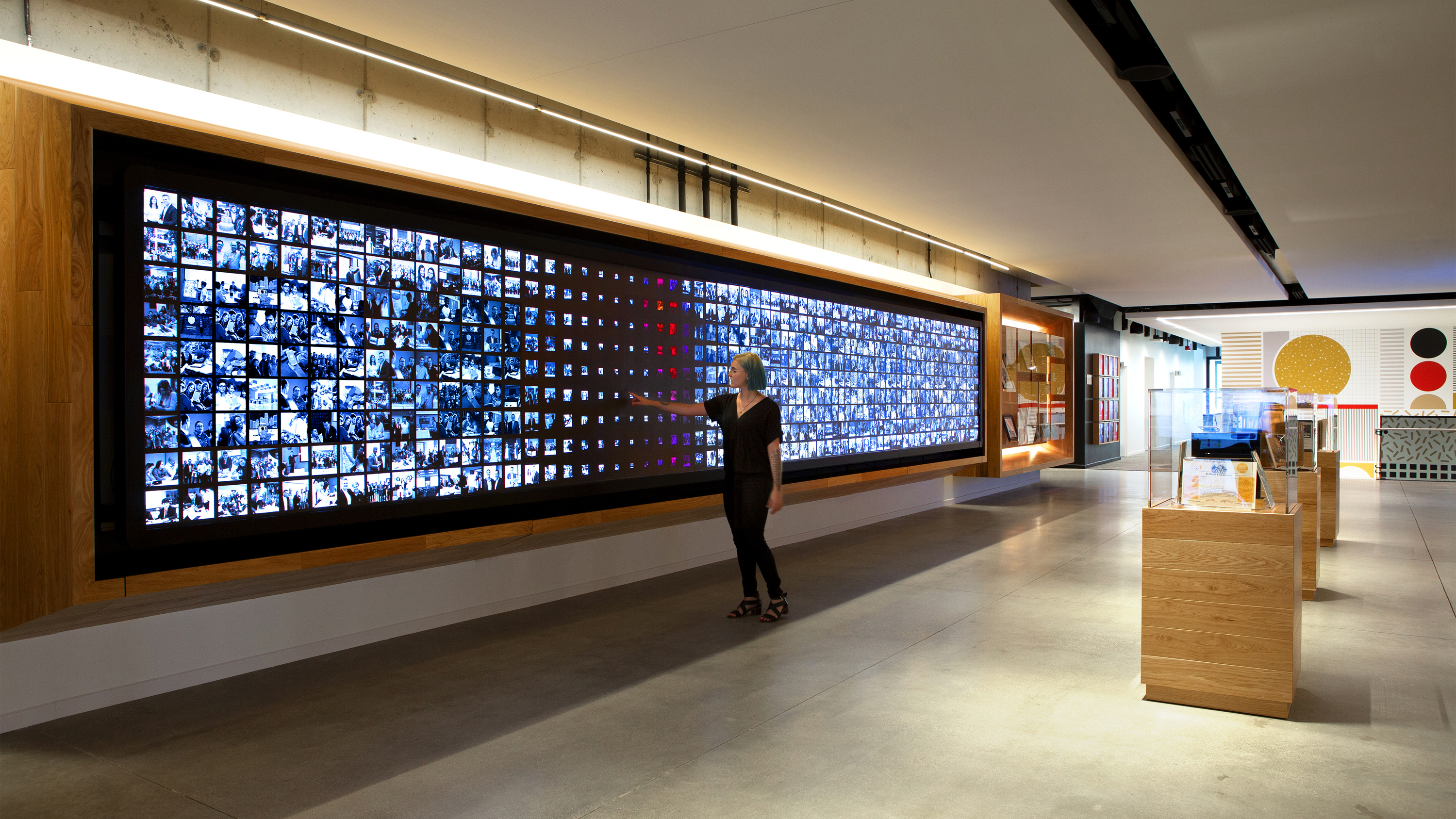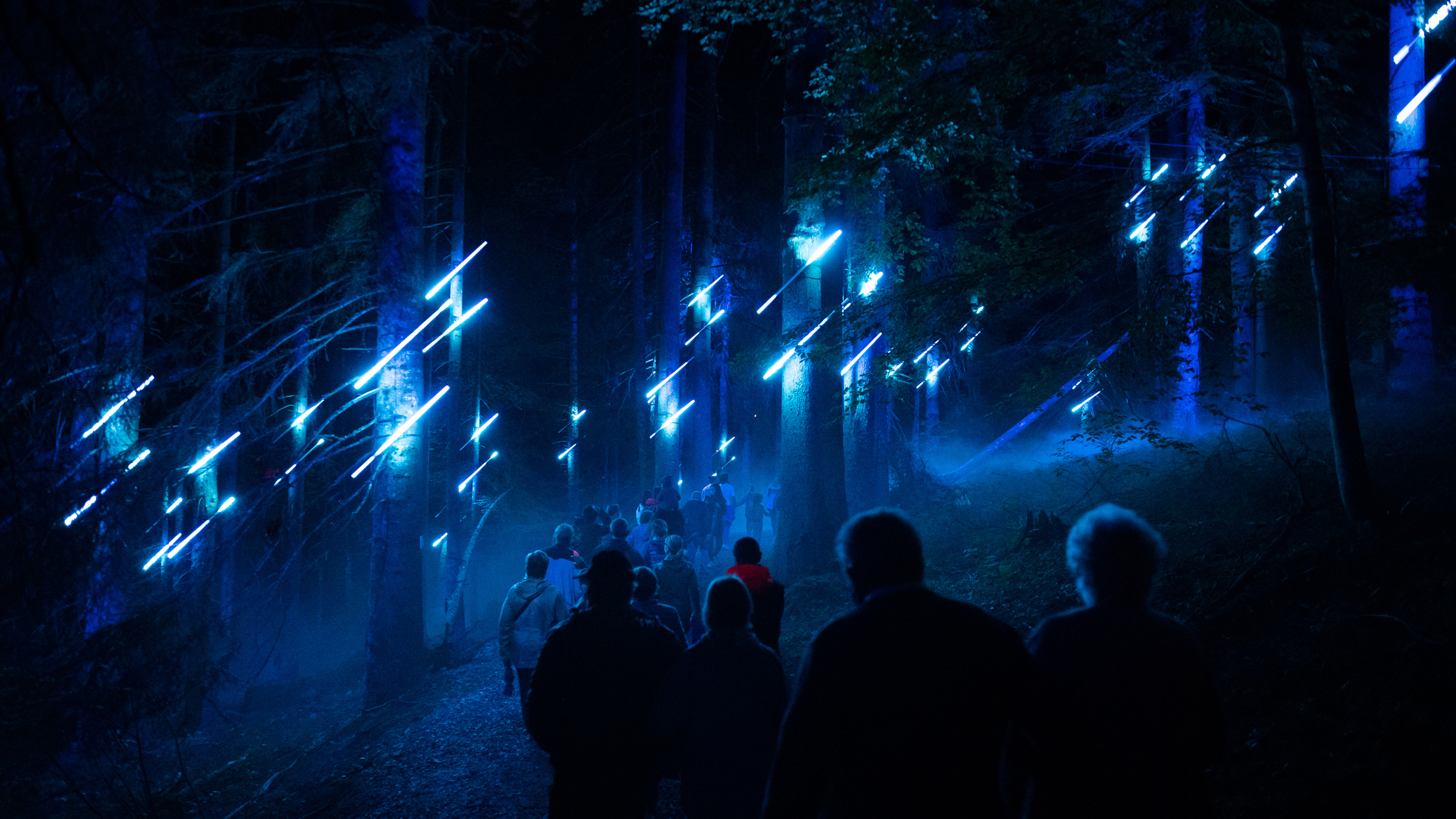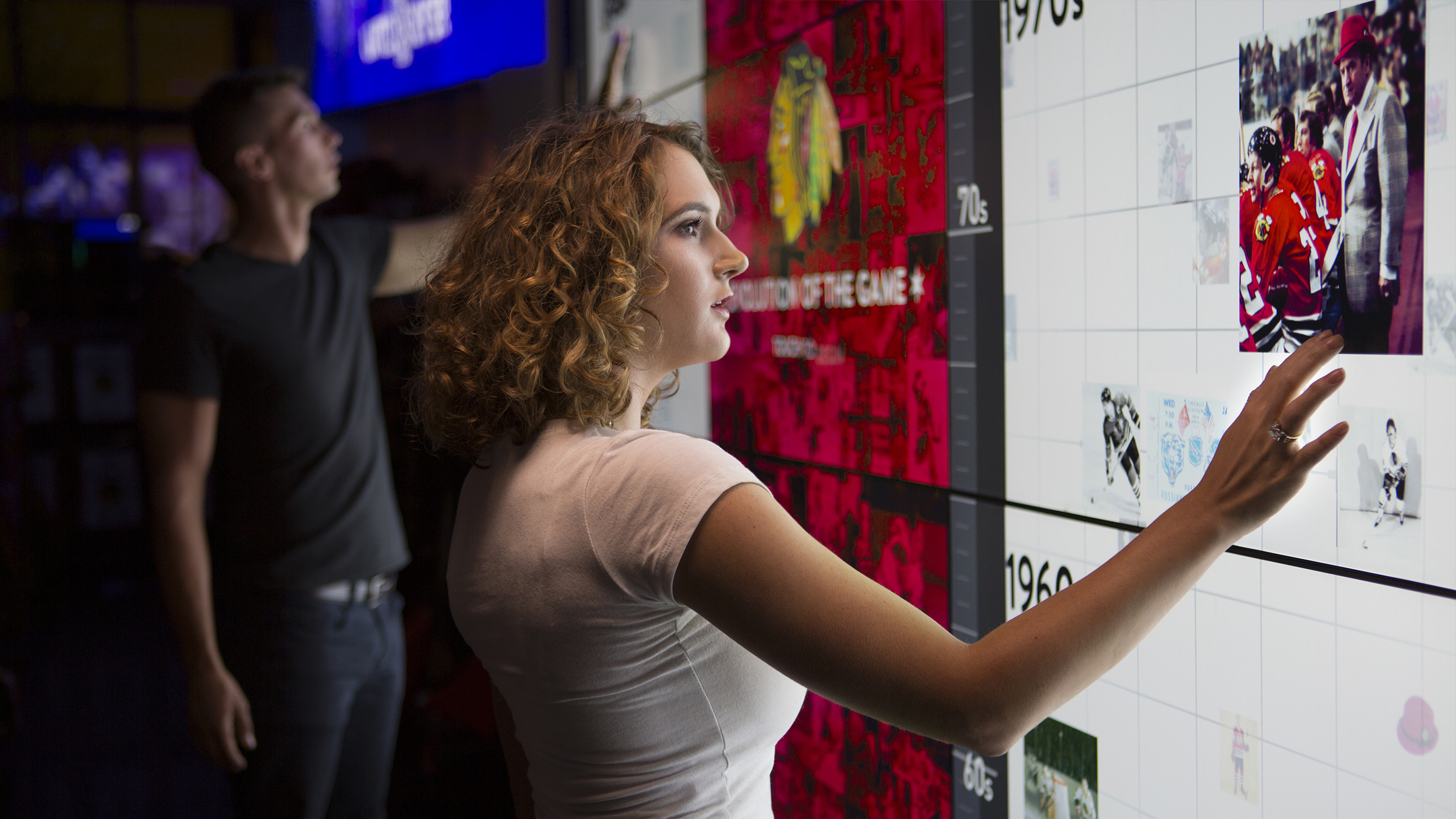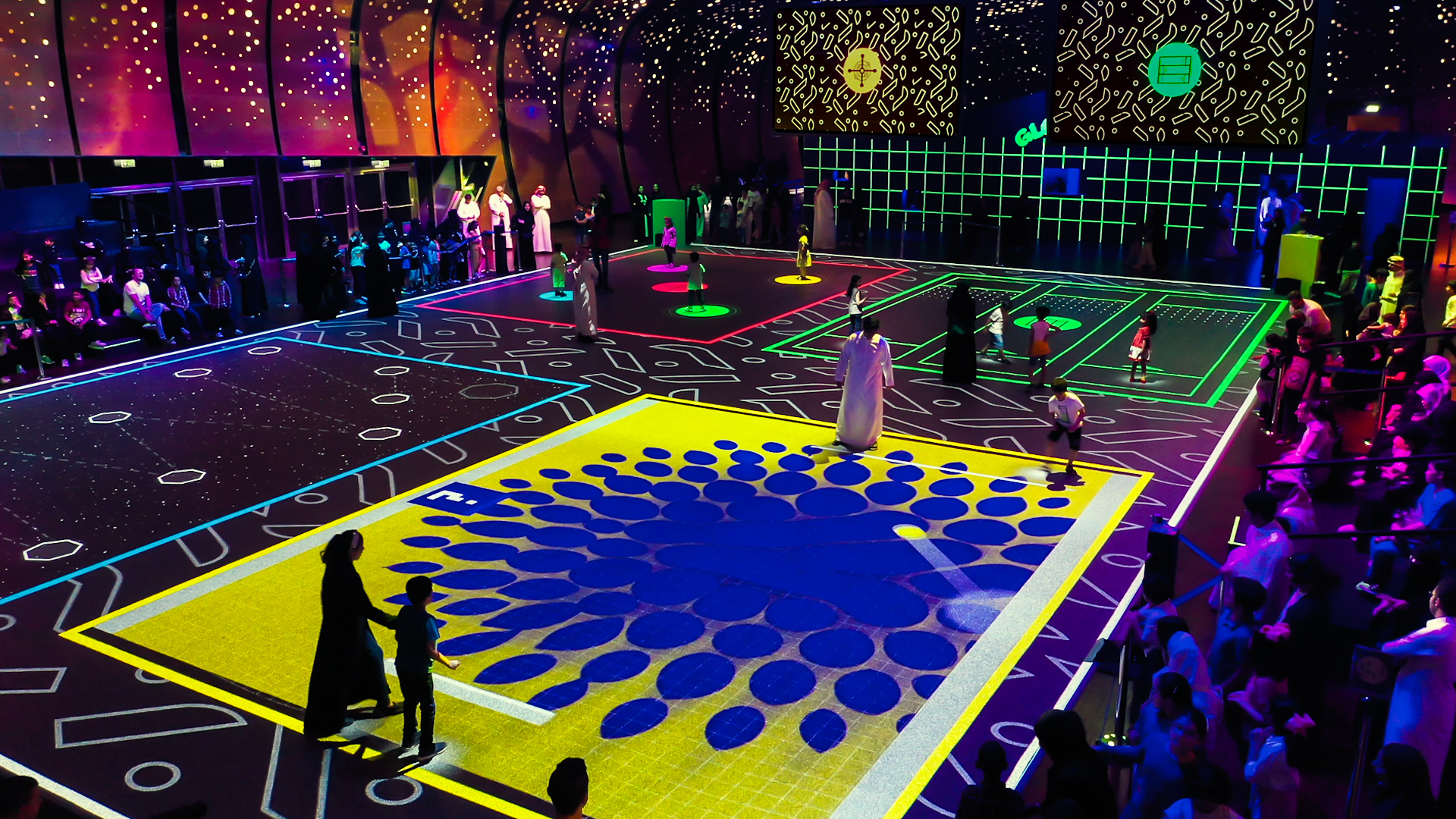The Importance of Compelling UX Design in Corporate Installations
SCN sits down with a number of UX experts who work in several different markets to discuss the importance of UX in AV design.

It’s safe to say that good AV systems prioritize user experience, and that good AV designers place UX above all else. It’s also safe to say that when AV designers don’t consider UX, their systems won’t meet desired adoption goals. But achieving good UX isn’t easy, given the diversity of AV projects, the number of stakeholders involved in them, and, of course, the users themselves. Recently, SCN sat down with a number of UX experts who work in several different markets to discuss the importance of UX in AV design.
At Moment Factory, a multimedia studio headquartered in Montreal, QC, that specializes in the creation of immersive environments, the focus is on storytelling and emotion. “The user is really the starting point, and then we explore how we can tell the story to make them feel certain emotions,” explained Céline Mornet, production manager and innovation lead at the firm. In many cases, the firm enlists user panels—in essence, focus groups—during the conception phase of a project to gain an understanding of how people from different demographics (such as age, gender, cultural background/nationality) will react to the experience. “Our projects are so diverse. If we’re creating an experience in Asia, the cultural point of view is very different from North America,” and the team adjusts the perspective accordingly.
Prior to joining Moment Factory, Mornet worked in the web industry, where she says solid UX is easier to achieve because projects are limited to a screen. In her current position, the canvas may extend to built environments, and sometimes the great outdoors. “You don’t react to an experience in the forest in the same way as you would in an indoor space,” she said. “We have to anticipate people’s behavior in the space that we’re using, and how they will interact together. For example, are they going to be alone, or are they coming with their family?” These are all considerations that Mornet and her team must take into account while conceptualizing, mocking up, and testing the experiences they create.

Leviathan is an experiential design agency based in Chicago, IL, that creates experiences for branded environments, themed entertainment spaces, public spaces, and live events. Chad Hutson, co-founder and CEO, explains that the project stakeholders he works with are varied, ranging from C-suite executives, marketing and technology directors, and sales enablement personnel, to architects, AV firms, and other agencies. Still, he estimates that the discovery process his company follows at the outset of a project is pretty standard.
“Our strategy and discovery conversation is probably no different than what an AV firm might ask: What’s the end goal here? Who is using these systems? What type of work do they perform in these spaces? How many different applications may need to be used? What are the stories that are being told?” Hutson illustrates.
Some experiences may have an educational goal, while others are more focused on emotion and engagement. “Thinking about those kinds of experiences requires us to ask all of the technology questions, but then to also ask, What do we want them to feel? What do we want them to take away from this? What is it that we want them to transact with?” It’s also necessary to consider if users are simply interacting with an experience of their own accord, or if it’s something they’re being guided through by someone else, he adds.
Of course, UX considerations shouldn’t be reserved for immersive, experiential design. If users in the enterprise, higher education, and government markets are to adopt the technologies that AV integrators deploy, UX should be the priority.
A daily selection of the top stories for AV integrators, resellers and consultants. Sign up below.
Audrey Bryson, a Morrisville, NC-based user experience researcher and designer with a background in AV, said that user experience designers often overlook the fact that in order to reach their end goal, users must interact with a multitude of systems. She cites an office building as an example: A visitor enters the lobby and must interact with a display to learn the location of their meeting; when they get to the room, they may be prompted by the digital signage at the door. Once inside the meeting room, they may then interact with the control system to launch a videoconference, which may in turn require some interaction with a projector, audio system, and switcher.

“Ideally the end user experiences consistency and intuitive products throughout their journey, but more often than not these systems are installed in an inconsistent and piecemeal fashion, which can easily cause frustration for the user and the overall experience to suffer,” Bryson said.
Bryson acknowledges that a significant challenge in this environment is designing a system that will provide a good experience for different types of users, including administrators, IT professionals, less technical users … and yes, even integrators. “There needs to be a clear objective in terms of which persona should be prioritized, and care should be taken to create the best experience possible for all types of users, despite the fact that they likely have very different expectations and understanding of the technology,” she said.
Adam Banks is co-founder of UX-Study in London. UX-Study builds and supports UX labs, which often include an AV element, for brands across the globe. Prior to co-founding the company, Banks spent 10 years at Google, first working in AV design before moving into research space design and then UX research at the company. Before joining Google, he worked in AV design and integration at a global financial firm and with the British government. He said he’s also worked at an AV integration firm.
In approaching the design of a meeting space, for example, Banks emphasized that he would talk to users about how they use technology in the workplace—but not about what they need (or think they need) out of a meeting room. “Because it might be that we don’t need meeting rooms. We’ve already jumped to the assumption that we’ve got to build some meeting rooms, but maybe we don’t need to,” he illustrated.
Instead, he argues that these questions would eventually lead to a better solution: When you have meetings with people, what are they for? What are you trying to achieve? How do they work? How do your meetings differ when you’re meeting with people physically versus virtually? What about when you’re meeting in hybrid format? Broad concepts rather than specifics, he said, are the best starting point.

“What you don’t do—what you never, ever do—is ask them what they need,” Banks said. “They’ll tell you, they’ll give you an answer, and they will be wrong because people don’t know what they need.”
What users do know are the goals they’re setting out to achieve, he said. “The meeting is never the goal; the goal is something else. The goal is to get a new client, or impress someone, or grow their business. There are these different layers of goals in a kind of inverse pyramid, and nowhere in that pyramid is ‘use a piece of technology.’ You need to talk to people in those terms to find out what they need, and then you can narrow it down.”
For Banks, the most important ingredient in a good UX design process is iteration. “I’m not just going to talk [to the users] once, design something, then walk away,” he said. “I’m going to go through an iterative process of designing things, testing them, prototyping—constantly going round and round the iterative circle until I’m happy with what I’ve got. Then I’ll deploy it. Then I’ll test it again.”
Pandemic-Driven UX
Chad Hutson, co-founder and CEO of Leviathan, says that his firm has been working with gesture technology for the last decade. He notes an increased potential for interest in this technology in the wake of the pandemic, provided that it’s user-friendly.
“There’s not a universal language [that says] raising your hand this way means X,” Hutson said. If systems require users to spend too much time learning how to interact with them, the experience is compromised. “Gesture technology can be very daunting in that you don’t have the time to teach someone how to do all of these complex forms of interaction. If we are going to use gesture technology—if we want it to be a seamless user experience—it has to be very intuitive: right hand to forward the content, left to reverse content. Simpler is better when it comes to those kinds of technologies.”

Accessible UX in UIs
One key element to good user interface design is ensuring that the UI can be accessed easily by people with disabilities. “This includes making sure buttons, backgrounds, and text all provide sufficient contrast against each other,” said Audrey Bryson, a user experience researcher and designer with a background in AV. Web-based products, for example, should support screen readers, while systems in a built environment need to be mounted at appropriate heights. “In all products, there are usually text elements for which designers might play a role in the type of language incorporated into the final design. Simplifying instructions and using plain language can go a long way in improving readability and understandability.”
Click here to read more stories from the August 2021 issue of SCN.
Related Installation Coverage
Yamaha Speakers Deliver Magical Sound at Alta Lumina Night Walk • Moment Factory devised a site-specific series of shows called Lumina Night Walks that transform outdoor sites into illuminated journeys, creating moments that invite people to safely reconnect in public.
Making the Abstract a Reality • Leviathan uses projection mapping to illustrate Jabil’s manufacturing scope.
Stepping into the Story • How AV is moving museums forward with immersive technology.
Carolyn Heinze has covered everything from AV/IT and business to cowboys and cowgirls ... and the horses they love. She was the Paris contributing editor for the pan-European site Running in Heels, providing news and views on fashion, culture, and the arts for her column, “France in Your Pants.” She has also contributed critiques of foreign cinema and French politics for the politico-literary site, The New Vulgate.
